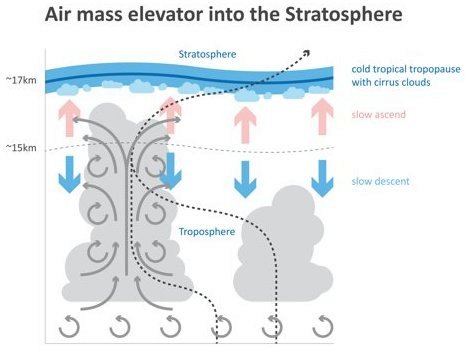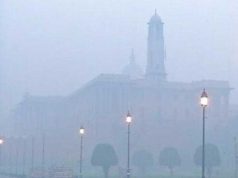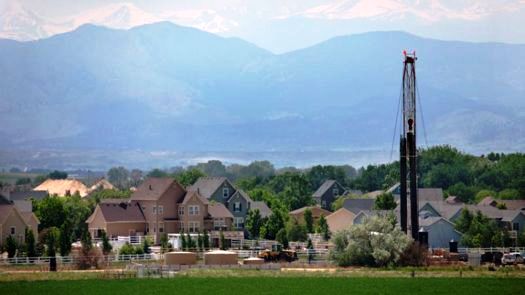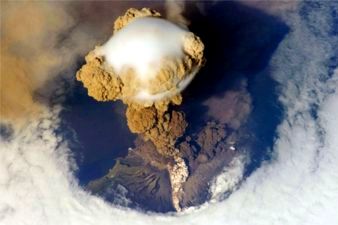If one takes into account that sulphur dioxide may also reach the stratosphere via the OH hole over the tropical West Pacific, it quickly becomes obvious that the atmospheric elevator over the South Seas not only boosts ozone depletion, but may influence the climate of the entire Earth. In fact, the aerosol layer in the stratosphere, which is also composed of sulphur particles, seems to have become thicker in recent years. Researchers do not know yet whether there is a connection here.
But wouldn’t it be a stroke of luck if air pollutants from South East Asia were able to mitigate climate warming? “By no means,” Markus Rex vigorously shakes his head. “The OH hole over the South Seas is above all further evidence of how complex climate processes are. And we are still a long way off from being in a position to assess the consequences of increased sulphur input into the stratosphere. Therefore, we should make every effort to understand the processes in the atmosphere as best we can and avoid any form of conscious or unconscious manipulation that would have an unknown outcome.”

Background
Why is there an OH hole over the West Pacific?
The air in the tropical West Pacific is extremely clean. Air masses in this area were transported across the expanse of the huge Pacific with the trade winds and for a long time no longer had contact with forests or other land ecosystems that produce innumerable short-lived hydrocarbons and release them into the air. Under these clean air conditions, OH is formed from ozone through chemical transformation to a great degree. If there is hardly any ozone in the lower atmosphere (= troposphere), as is the case in the West Pacific, only little OH can be formed. The result is an OH hole.
Ozone, in turn, forms in the lower atmosphere only if there are sufficient nitrogen oxides there. Large amounts of nitrogen oxide compounds are produced in particular by intensive lightning over land. However, the air masses in the tropical West Pacific were not exposed to any continental tropical storms for a very long time during their transport across the giant ocean. And the lightning activity in storms over the ocean is relatively small. At the same time, the lifetime of atmospheric ozone is short due to the exceptionally warm and moist conditions in the tropical West Pacific. In this South Sea region, the surface temperatures of the ocean are higher than anywhere else on the planet, which makes the air not only quite warm, but also quite moist. The ozone is thus quickly lost, especially directly above the water. And due to the lack of nitrogen oxide compounds, little ozone is subsequently formed. Rapid vertical mixing in the convection areas, that exist everywhere over the warm ocean and in which the warm air rises, take care of the rest. Finally, there is no more ozone in the entire column of air in the troposphere. And without ozone (see above) the formation of OH is suppressed.
What impact does the OH hole over the West Pacific have?
The OH molecule is also called the detergent of the atmosphere. Nearly all of the thousands of different chemical substances produced by people, animals, plants, fungi, algae or microorganisms on the ground or in the oceans react quickly with OH and break down in this process. Therefore, virtually none of these substances rises into the stratosphere. In the area of the OH hole, however, a larger portion of this varied chemical mix can enter the stratosphere.
And local emissions may unfold a global impact, especially if they make it to the stratosphere. There they spread globally and can influence the composition of the air for many years – with far-reaching consequences for ozone chemistry, aerosol formation and climate.
Why wasn’t the OH hole discovered earlier?
The tropical West Pacific is one of the most remote regions on our planet. That is why extensive measurements of the air composition have yet to take place in this area. There is also a considerable gap in the otherwise dense network of global ozone measurement stations here. Even in the past measurements from the peripheral sections of the now investigated region showed minimal ozone values in the area of the upper troposphere, but not the consistently low values that have now been found across the entire depth of the troposphere. The newly discovered phenomenon reveals itself in its full scope only through the measurements that were conducted to such an extensive degree for the first time and was thus not able to be grasped at all previously.
Click here to read/download the Full Study – “A Tropical West Pacific OH Minimum and Implications for Stratospheric Composition”.
Source: AWI.
* One part of ozone per billion by volume (ppbv) means there is one ozone molecule for every billion air molecules.



















